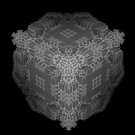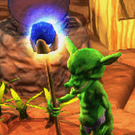The framebuffer would be used to generate position and heightmaps for real time processing and creating geometry detail data which is faster.
In detail, a basic topology is generated and passed onto the GPU that creates a position map using perlin noise for faster processing. Once the information is produced a accurate height map is generated on the GPU side. The CPU creates enougth information for physics but the GPU does the heavy work to create larger geometry using camera position.
The code I have uses quadtree format. Each side of a cube has a node. Each node has a member NW, NE, SW,SE with a topology patch. Depending on camera decision each node can be subdivided by four. There is a hard limit of the number of splits. I’m looking at a default split no matter the camera (server side), on the client (x number of split max).
As to what I with the help of another programmer. We are looking to implement this system in a client/server environment. Basic topology is created on a need be basis on a server and client but on a client details are made for visual expects.
A pdf of the process is here
https://drive.google.com/open?id=1pMkiKikuD0tkTFc0e7S-olPw2-dfKPrm
and sample source is
https://drive.google.com/open?id=11s1bQOC9P4nalZSUBBCG1arTXg1Vzte1
I think it used the GPU/CPU very different then Urho3D graphic system and the demo code is opengl so it requires a bit of work but if the results is close to the video. It would be a huge plus.
So far I made addition Urho3D backend could for OpenGL and a new Vector3 meaning type=unsigned int in some additional code and hopefully pull into the code advance math libraries more towards sciencetific.
Vivienne





